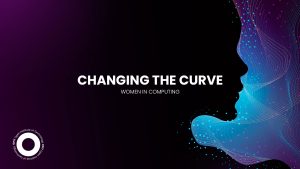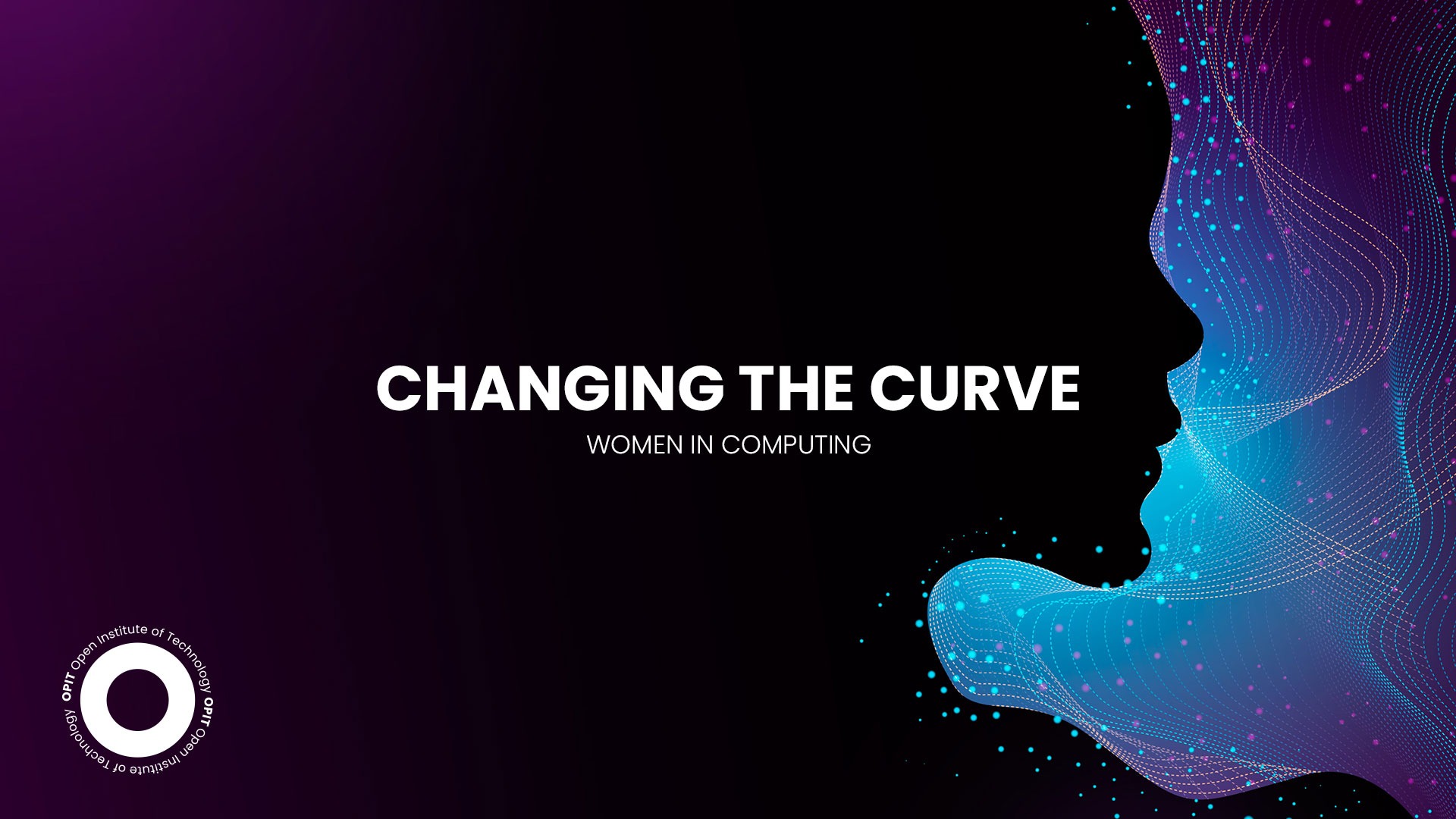Read the full article below (in Italian):


Did you know that the world’s first computer programmer was a woman? That’s right, Ada Lovelace, an English mathematician and writer, is widely considered the first person to recognize the potential of a computer. She realized it could go beyond mere calculations and handle symbols and logical operations (besides numbers).
Yet, many scholars still argue that Lovelace’s contributions to the field have been vastly overstated, going as far as denying them altogether. Unfortunately, it all boils down to a belief that a woman “didn’t do, and shouldn’t do, and couldn’t do” such a thing.
Perhaps similar beliefs are the reason why women continue to be underrepresented in the field of computing today. Since Lovelace, many female tech visionaries have made significant and varied contributions to this field. And yet, the gap persists.
Is this how it will always be? Or can something be done to pave the way for a more inclusive future in computing? That’s what this article will explore.
The History of Women in Computing and Computer Science
Ada Lovelace’s work in the mid-19th century laid the foundation for modern computing, earning her the flattering title of “World’s First Computer Programmer.” But she wasn’t the only woman to make monumental contributions to computer science.
To understand the ever-growing push for equality in computing, you must first take a journey throughout history, highlighting some of these women’s most notable (and often overlooked) contributions in this field.
1952: Grace Hopper
Grace Hopper, a U.S. Navy admiral and computer scientist, invented the first computer compiler, translating English instructions into the target computer’s language. Code optimization, formula translation, and subroutines are just some computing developments inspired by Hopper’s groundbreaking work.
That’s why it shouldn’t be surprising that the world’s largest gathering of women technologists is named in her honor – the Grace Hopper Celebration.
1962: Katherine Johnson
Katherine Johnson, one of the women immortalized in the 2016 book and film “Hidden Figures,” was the one to run equations needed for John Glenn’s historic orbital flight in 1962. She would go on to work on other groundbreaking NASA missions, including the Apollo program.
1970s: Adele Goldberg
Though Adele Goldberg has made many contributions to computing, she’s best known for developing the Smalltalk programming language, which was crucial in shaping modern graphical user interfaces.
1985: Radia Perlman
The fact that Radia Perlman is often referred to as the “Mother of the Internet” probably tells you all you need to know about her importance in computing history. Perlman is renowned for inventing the Spanning Tree Protocol, a technology that greatly enhanced the reliability and efficiency of network communication.
1997: Anita Borg
In 1997, a U.S. computer scientist, Anita Borg, founded the Institute for Women in Technology. This institute had (and continues to have) two simple goals – to increase the representation of women in technical fields and enable them to create more technology.
2018: Joy Buolamwini
Joy Buolamwini, currently one of the most influential women in computer science, is primarily known for her groundbreaking graduate thesis uncovering significant racial and gender bias in AI services. She also founded the Algorithmic Justice League, a non-profit organization focusing on making tech more equitable and accountable.
The Present State of Women in Computing and Computer Science
There have undoubtedly been strides in increasing women’s representation in computing and computer sciences. Though it’s challenging to determine what came first, one of the most significant moves in this regard was giving credit where credit’s due.
For instance, the “ENIAC Six,” the six women tasked with programming the ENIAC (Electronic Numerical Integrator and Computer), weren’t initially recognized for their historic contributions. It took decades for this recognition to come, but this doesn’t make it any less monumental.
But even with these recognitions, initiatives, awareness campaigns, and annual events, the gender gap in computing persists. This gap can be seen by examining the number of women in three crucial computing and computer science stages – education, workforce, and leadership.
Today, there’s no shortage of degree programs in computer science, both traditional and online. But one look at the data about the students attending these programs, and you’ll understand the issue. Though more women hold tertiary degrees in the EU, they’re notably absent in computer science-related fields.
The situation in the computing workforce is no better. Currently, women occupy only 22% of all tech roles across European companies, and to make matters worse, this figure is on a downward trajectory.
Just when you think it can’t get any more dismal, take a look at the highest levels of professional leadership in computing and technology. One look at the C-suite (senior executives) stats reveals abysmal figures. For instance, only 9% of the U.K. C-suite leaders are women.
The Reasons Behind the Current State of Women in Computing
By now, you probably agree that something needs to change to address the gender disparity in computing. And it needs to change drastically. But to propose effective solutions, you must first examine the root of the problem.
Though it’s challenging to pinpoint a single explanation for the underrepresentation of women in computing, let’s break down factors that might’ve contributed to the current situation.
The Lack of Women Peers and Mentors
Paradoxically, women might be less willing to enter the computing field due to the lack of visible representation and mentorship. Essentially, this creates a never-ending cycle of underrepresentation, thus only deepening the gender gap.
Societal Stereotypes and Biases
Deep-rooted stereotypes about gender roles can, unfortunately, dissuade women from pursuing computer science. The same goes for stereotyping what average computer scientists look like and how they act (the “nerd” stereotype often reinforced by media).
Fortunately, initiatives promoting diversity and inclusion in computer science are breaking down these stereotypes gradually yet efficiently. The more women join this field, the more preconceived (and misguided) notions are shattered, demonstrating that excellence in computing knows no gender.
Hostile or Unwelcoming Work Environments
It’s well-documented that highly collaborative fields were less welcoming to gender minorities throughout history, and computer science was no different. Though the situation is much better today, some women might still fear working within a predominantly male team due to these lingering concerns from the past.
Educational Disparities
Numerous studies have shown that precollege girls are less likely to be exposed to various aspects of computing, from learning about hardware and software to dissecting a computer. So, it’s no wonder they might be less inclined to pursue a career in computing after lacking exposure to its foundational aspects.
A Worse Work-Life Balance
Many big tech companies are notorious for long working hours. The same goes for computer science as a field. The result? Some women might perceive this field as too demanding and impossible to reconcile with raising a family, leading them not to consider it.
How to Change the Curve
Though the past might’ve seemed bleak for women in computing, the present (and future) hold promise for positive change. Of course, no fundamental changes can happen without collective commitment and decisive action. So, what can be done to change the curve once and for all and promote greater gender diversity in computing?
Striving to Remove the Barriers
So, you believe women should experience all the opportunities that come with a career in computing. But this can only be done by actively addressing and eliminating the barriers impeding their progress in the field.
This means launching campaigns to dismantle the deep-rooted stereotypes, introducing policies to create supportive working (and learning) environments, and regularly recognizing and celebrating women’s achievements in computing.
Making the Field Exciting for Women
Educational institutions and companies also must pull their weight in making the computing field more appealing to women despite the existing challenges. This might involve hands-on and collaborative learning, showcasing diverse role models in the field (e.g., at the annual Grace Hopper Celebration of Women in Computing), and establishing mentorship programs.
Relying on Mutual Support
As long as women have a strong enough support system, they can conquer anything, including the often daunting field of computer science. Here are some organizations that can provide just that: (See if you can spot some familiar individuals in their names!)
Other than that, women now have access to a whole host of resources and opportunities they can use to advance their knowledge and excel in the field. These include the following:
- Coding bootcamps
- Career fairs for women in tech
- STEM scholarships
Gaining Access to Education
Allowing equal access to education to women might be the most crucial element in changing the curve. After all, proper education serves as a direct gateway to opportunities and empowerment in computer science (and beyond).
With the popularization of online studying, many of the obstacles (both actual and perceived) that traditionally hindered women’s involvement in computing have disappeared. Now, women can learn about (and engage in) computer science from the comfort of their own homes, going at their own pace.
That’s precisely a part of the reason Alona, a Latvian student at the Open Institute of Technology, chose to pursue online education in computer science. Even with two children and a job (and a Bachelor’s degree in linguistics), she can find time to study and potentially earn her degree in as little as two years. Talk about an outstanding work-life balance!
When pursuing a degree in computer science at the OPIT, there are no hostilities, inadequacies, or barriers, only boundless opportunities.
Related posts

Source:
- Agenda Digitale, published on June 16th, 2025
By Lokesh Vij, Professor of Cloud Computing Infrastructure, Cloud Development, Cloud Computing Automation and Ops and Cloud Data Stacks at OPIT – Open Institute of Technology
NIST identifies five key characteristics of cloud computing: on-demand self-service, network access, resource pooling, elasticity, and metered service. These pillars explain the success of the global cloud market of 912 billion in 2025
Read the full article below (in Italian):

You’ve probably seen two of the most recent popular social media trends. The first is creating and posting your personalized action figure version of yourself, complete with personalized accessories, from a yoga mat to your favorite musical instrument. There is also the Studio Ghibli trend, which creates an image of you in the style of a character from one of the animation studio’s popular films.
Both of these are possible thanks to OpenAI’s GPT-4o-powered image generator. But what are you risking when you upload a picture to generate this kind of content? More than you might imagine, according to Tom Vazdar, chair of cybersecurity at the Open Institute of Technology (OPIT), in a recent interview with Wired. Let’s take a closer look at the risks and how this issue ties into the issue of responsible artificial intelligence.
Uploading Your Image
To get a personalized image of yourself back from ChatGPT, you need to upload an actual photo, or potentially multiple images, and tell ChatGPT what you want. But in addition to using your image to generate content for you, OpenAI could also be using your willingly submitted image to help train its AI model. Vazdar, who is also CEO and AI & Cybersecurity Strategist at Riskoria and a board member for the Croatian AI Association, says that this kind of content is “a gold mine for training generative models,” but you have limited power over how that image is integrated into their training strategy.
Plus, you are uploading much more than just an image of yourself. Vazdar reminds us that we are handing over “an entire bundle of metadata.” This includes the EXIF data attached to the image, such as exactly when and where the photo was taken. And your photo may have more content in it than you imagine, with the background – including people, landmarks, and objects – also able to be tied to that time and place.
In addition to this, OpenAI also collects data about the device that you are using to engage with the platform, and, according to Vazdar, “There’s also behavioral data, such as what you typed, what kind of image you asked for, how you interacted with the interface and the frequency of those actions.”
After all that, OpenAI knows a lot about you, and soon, so could their AI model, because it is studying you.
How OpenAI Uses Your Data
OpenAI claims that they did not orchestrate these social media trends simply to get training data for their AI, and that’s almost certainly true. But they also aren’t denying that access to that freely uploaded data is a bonus. As Vazdar points out, “This trend, whether by design or a convenient opportunity, is providing the company with massive volumes of fresh, high-quality facial data from diverse age groups, ethnicities, and geographies.”
OpenAI isn’t the only company using your data to train its AI. Meta recently updated its privacy policy to allow the company to use your personal information on Meta-related services, such as Facebook, Instagram, and WhatsApp, to train its AI. While it is possible to opt-out, Meta isn’t advertising that fact or making it easy, which means that most users are sharing their data by default.
You can also control what happens with your data when using ChatGPT. Again, while not well publicized, you can use ChatGPT’s self-service tools to access, export, and delete your personal information, and opt out of having your content used to improve OpenAI’s model. Nevertheless, even if you choose these options, it is still worth it to strip data like location and time from images before uploading them and to consider the privacy of any images, including people and objects in the background, before sharing.
Are Data Protection Laws Keeping Up?
OpenAI and Meta need to provide these kinds of opt-outs due to data protection laws, such as GDPR in the EU and the UK. GDPR gives you the right to access or delete your data, and the use of biometric data requires your explicit consent. However, your photo only becomes biometric data when it is processed using a specific technical measure that allows for the unique identification of an individual.
But just because ChatGPT is not using this technology, doesn’t mean that ChatGPT can’t learn a lot about you from your images.
AI and Ethics Concerns
But you might wonder, “Isn’t it a good thing that AI is being trained using a diverse range of photos?” After all, there have been widespread reports in the past of AI struggling to recognize black faces because they have been trained mostly on white faces. Similarly, there have been reports of bias within AI due to the information it receives. Doesn’t sharing from a wide range of users help combat that? Yes, but there is so much more that could be done with that data without your knowledge or consent.
One of the biggest risks is that the data can be manipulated for marketing purposes, not just to get you to buy products, but also potentially to manipulate behavior. Take, for instance, the Cambridge Analytica scandal, which saw AI used to manipulate voters and the proliferation of deepfakes sharing false news.
Vazdar believes that AI should be used to promote human freedom and autonomy, not threaten it. It should be something that benefits humanity in the broadest possible sense, and not just those with the power to develop and profit from AI.
Responsible Artificial Intelligence
OPIT’s Master’s in Responsible AI combines technical expertise with a focus on the ethical implications of AI, diving into questions such as this one. Focusing on real-world applications, the course considers sustainable AI, environmental impact, ethical considerations, and social responsibility.
Completed over three or four 13-week terms, it starts with a foundation in technical artificial intelligence and then moves on to advanced AI applications. Students finish with a Capstone project, which sees them apply what they have learned to real-world problems.
Have questions?
Visit our FAQ page or get in touch with us!
Write us at +39 335 576 0263
Get in touch at hello@opit.com
Talk to one of our Study Advisors
We are international
We can speak in:


